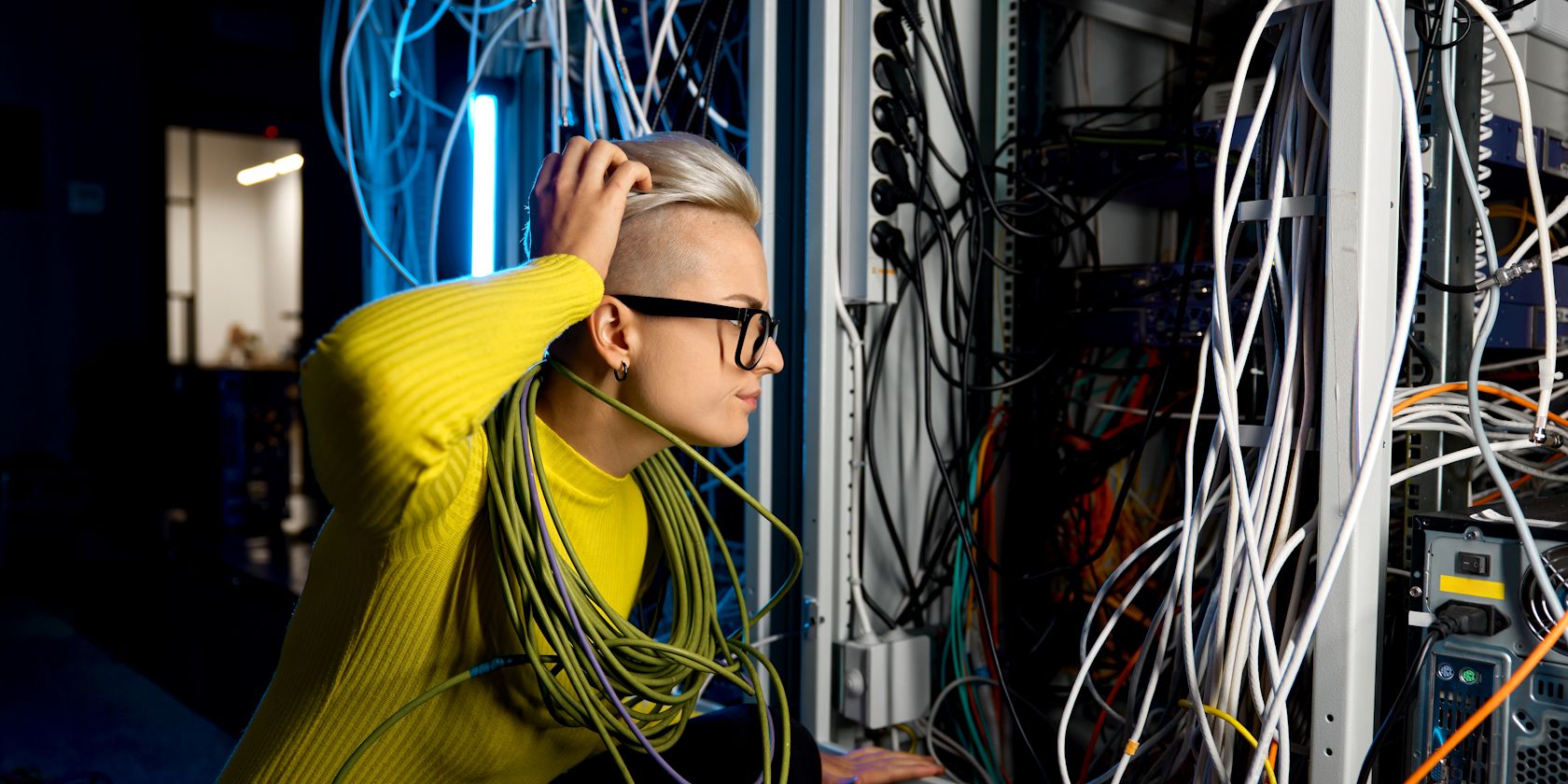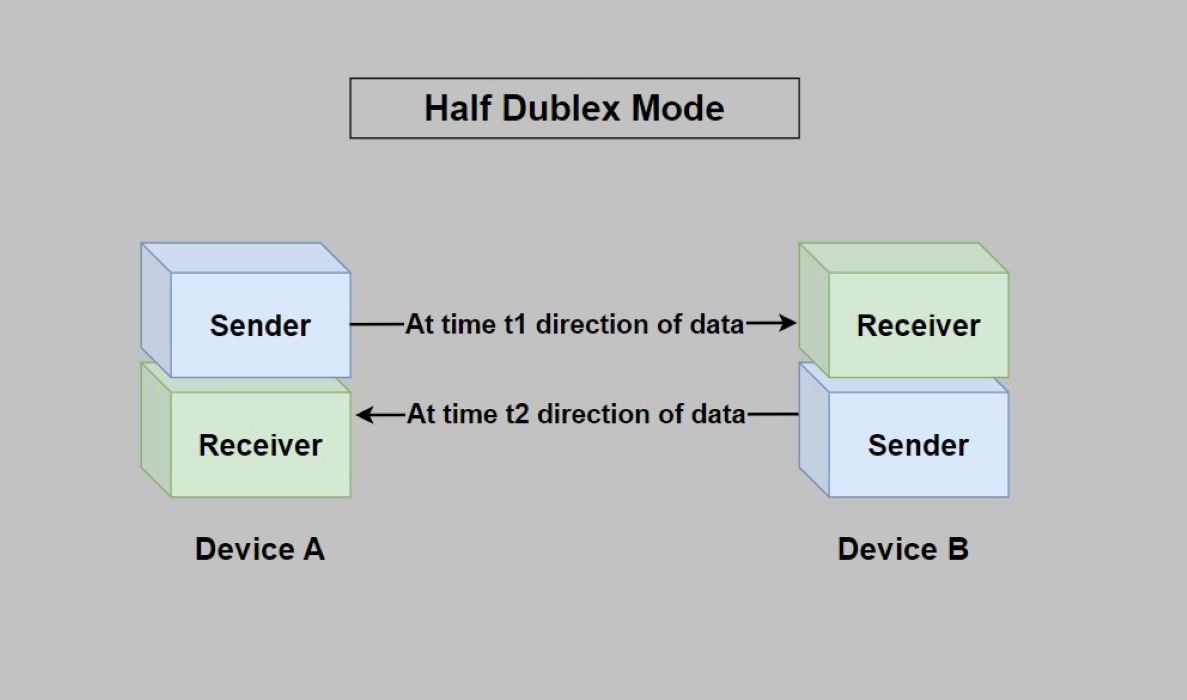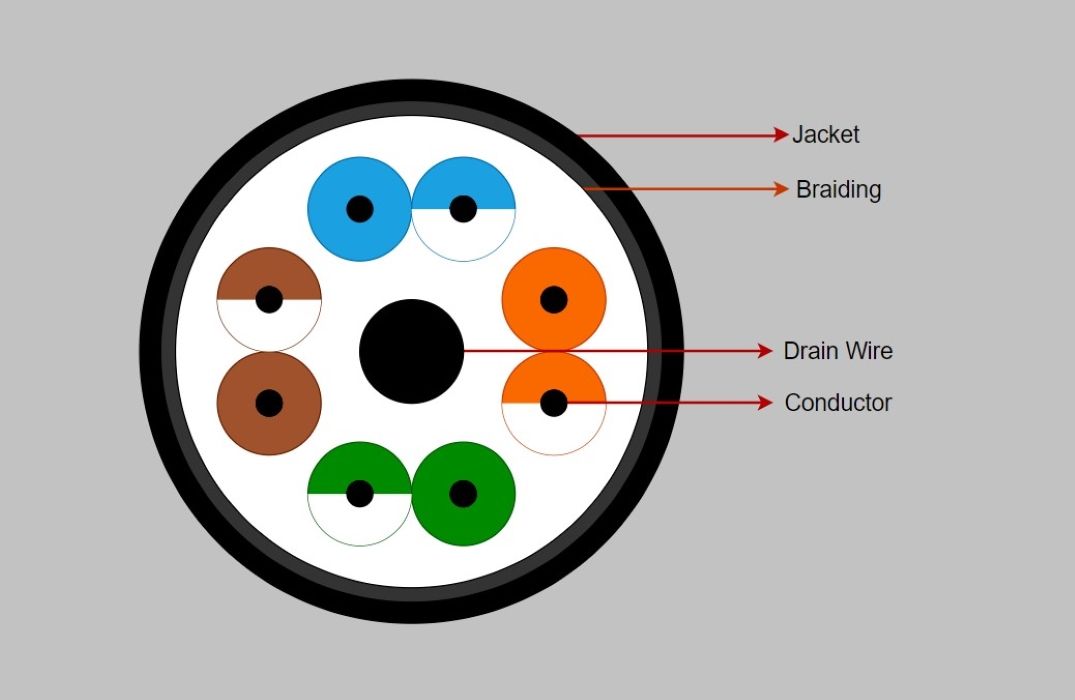Key Takeaways
- Understanding the difference between full duplex, half duplex, and simplex systems can provide insights into the design and performance of our daily tech.
- Full duplex communication enables two interconnected elements to transmit and receive information simultaneously, while half duplex systems follow a sequential framework for data transmission and reception.
- Wi-Fi routers operate in half duplex mode, but advancements in full duplex router technology are gaining traction to address self-interference challenges and increase spectral efficiency.
In today's interconnected world, the efficiency of our digital communications hinges on underlying technologies we often overlook. One such fundamental concept is "duplexing," governing how data is transmitted and received across networks. Whether you're making a phone call, watching a live stream, or using Wi-Fi, understanding the difference between full duplex, half duplex, and simplex systems can provide insights into the design and performance of our daily tech.
Duplex vs. Simplex: What's the Difference?
In the field of network communication, the term duplex signifies the ability of two different points or devices to engage in two-way communication. This contrasts the concept of simplex, which refers to one-way communication. In a duplex communication system, both participant points can transmit and receive information. Everyday technologies like phones and radios are examples of duplex systems.
Conversely, simplex systems only permit one device to transmit information while the other receives. As an illustrative instance, consider the ubiquitous infrared remote control used for various electronic devices. The infrared remote control assumes the role of transmitting signals exclusively, devoid of any feedback or information-receiving capacity.
|
Feature |
Simplex |
Half Duplex |
Full Duplex |
|---|---|---|---|
|
Definition |
Data flows in only one direction at a time |
Data can be sent and received, but not simultaneously |
Data is sent and received simultaneously |
|
Communication Example |
TV broadcasts |
Walkie-talkie |
Telephone calls |
|
Technology Use |
Radio broadcasts |
Some Wi-Fi protocols |
Fiber optic communications |
|
Pros |
Simple, no interference |
Lower cost, energy-saving |
High data rate, continuous communication |
|
Cons |
No feedback or acknowledgment of received data |
Slower data rate due to turn-taking |
Complexity, interference concerns |
|
Ideal Usage Scenarios |
Broadcasting stations |
Limited bandwidth environments, half duplex routers |
High-bandwidth requirements, full duplex router |
How Do Full and Half Duplex Differ?
Full duplex communication represents a significant advancement in the field of data exchange, enabling two interconnected elements to transmit and receive information simultaneously. Telephone systems provide a clear example of this phenomenon, as both participants in a conversation can speak and listen concurrently.
On the other hand, half-duplex systems follow a sequential framework for data transmission and reception. In these systems, the process of transmitting and receiving information occurs alternately. While one of the two points is transmitting data, the other is restricted to the role of reception. Walkie-talkie radio communication uses a half-duplex system, where one party talks while the other listens, then vice versa.
As technology advances, the distinction between full duplex vs. half duplex communication serves as a foundation for designing and implementing efficient communication systems across various domains, each tailored to the specific requirements of the interaction at hand.
How Duplexing Affects Wi-Fi Routers
Wi-Fi routers direct the flow of information between Wi-Fi-enabled electronic devices (like laptops or smartphones) and the internet using a specific standard called IEEE 802.11, operating in half duplex mode. Wi-Fi is the trademark brand for this specific IEEE standard (understand the common Wi-Fi standards).
Wi-Fi devices wirelessly connect to the router using radio waves at 2.4GHz or 5GHz. The router schedules and ensures the correct information flows between each connected device and the internet, without collision and loss, by a process called Time Division Duplexing (TDD) to behave like full duplexing.
TDD emulates full duplexing by setting up or dividing periods that alternate between transmission and reception. Data packets flow both ways as dictated by the time divisions. By chopping these periods finely, devices connected this way seem to transmit and receive simultaneously.
Why Can't Routers Run At Full Duplex?
The primary challenge in achieving full duplex capability over radio is self-interference. This interference, or noise, is often stronger than the actual signal. In simple terms, self-interference occurs within a full duplex system when a single point transmits and receives simultaneously. This leads to the reception of its own transmission, creating self-interference.
In research and academia, the idea of a full duplex router for wireless communication is gaining traction, addressing what a full duplex in the context of networking. It's an evolution towards making every router full duplex. To make this possible in a full duplex router, researchers are tackling the challenge of self-interference, using techniques like reversing the unwanted noise and applying digital enhancements.
A few Stanford University students built working full duplex radio prototypes in 2010 and 2011. They also published the technical documentation [PDF] of their work. Some of these students have gone on to form a commercial startup called KUMU Networks, which is committed to revolutionizing wireless networking.
Other works, such as IBFD (In-Band Full Duplex) by Cornell University and STAR (Simultaneous Transmit and Receive) by Photonic Systems Inc., can also be found.
Is Wired LAN Half or Full Duplex?
The wired portion of the LAN communicates at full duplex with two pairs of twisted wires forming the Ethernet cable connection. Each pair exclusively transmits and receives information packets simultaneously, thus eliminating any data collisions and interference.
Here's everything you need to know about Ethernet cables.
Progress In Wi-Fi Connectivity
Within the IEEE 802.11 protocol, changes were made to achieve either better range or better data throughput, or both. From its formative days in 1997, Wi-Fi standards have been amended from 802.11 to 802.11b/a, 802.11g, 802.11n, 802.11ac (should you buy a wireless-AC router?), and now, 802.11ax.
Interestingly, routers supported by MIMO technology promote significantly higher data rates. These routers employ multiple antennas to simultaneously transmit and receive multiple data streams, effectively enhancing overall transfer speeds. This feature is prevalent in 802.11n and more recent router models, which boast speeds of 600 megabits per second and beyond. However, due to their half-duplex operation, these routers allocate 50 percent (300 megabits per second) of the bandwidth for transmitting and the remaining 50 percent for receiving. It's important to note that these figures aren't fixed and can vary based on the specific router and conditions.
FDD vs. TDD: What's the Difference?
In the context of wireless communications, especially when considering the duplex internet, there are two predominant methods for duplexing: Frequency Division Duplexing (FDD) and Time Division Duplexing (TDD).
FDD provides a full-duplex internet experience by allowing simultaneous transmission and reception of data by utilizing two separate frequency bands. This approach mirrors what is commonly found in full duplex router systems, where both send and receive operations take place concurrently. When wondering is internet a full duplex, you can look at mobile networks like 3G and 4G, which typically employ this FDD method for communication, showcasing true full-duplex capabilities.
On the other hand, TDD reminds us of the mechanics behind router duplex operations. TDD alternates between transmission and reception periods on a single frequency band, much like how half-duplex routers function. It behaves similarly to half-duplex systems, where data exchange occurs sequentially. It offers the impression of simultaneous transmission and reception in devices like Wi-Fi routers due to the rapid alternation of these periods.
Full Duplex Wi-Fi In The Future
There is increasing commercial interest in full duplex router technology. The main reason is that advances in half-duplex FDD and TDD are saturating. Software enhancements, modulation advances, and MIMO improvements are getting harder and harder. As more devices connect wirelessly, the need for increased spectral efficiency will eventually be paramount. Full duplex wireless connections have successfully demonstrated the instantaneous doubling of this spectral efficiency.
In areas where there is minimum impact on hardware, software reconfiguration, regulatory changes, and monetary investments, this change from half duplex to full duplex will start to figure more and more prominently. Driven initially by the need for more capacity, we may find full duplex Wi-Fi sometime shortly, initially side by side with the latest half duplex components.



